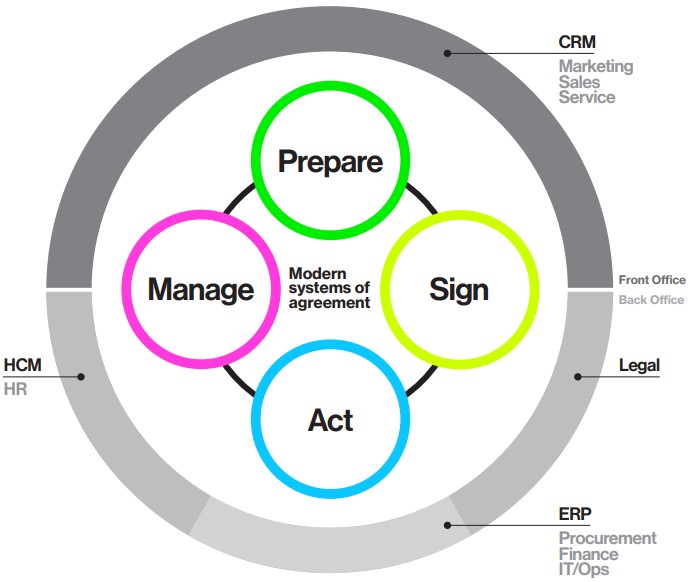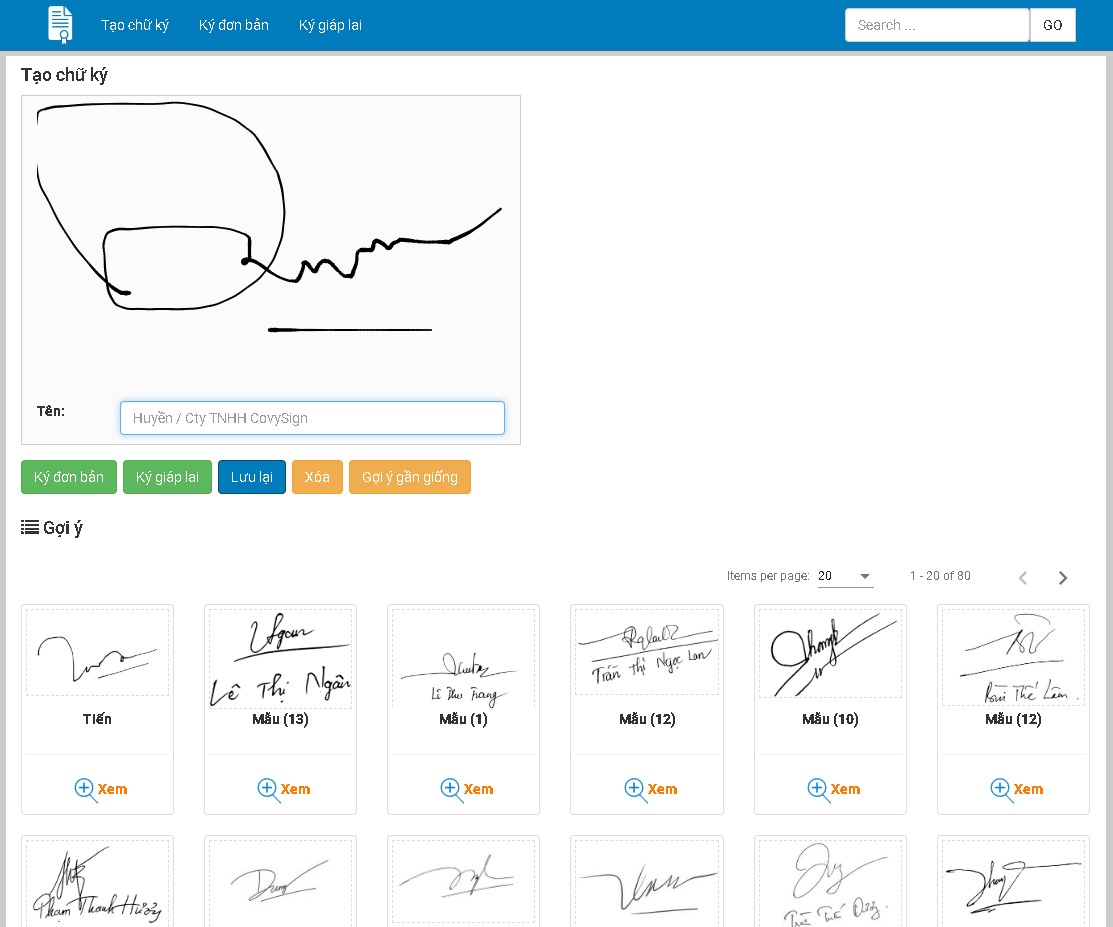Modern systems of agreement
Just as CRM, HCM, and ERP became purpose-built solutions to manage data and to drive workflows in their respective areas, a modern system of agreement needs its own purposebuilt solution. This solution must act as a hub to coordinate and connect with all the other systems and processes that feed, support, or consume agreements—including CRM, HCM, and ERP systems themselves. The technology for such a solution is real now. A useful way to think about it is in terms of the Prepare, Sign, Act, and Manage stages’ activities.
| Prepare | Sign |
| These activities are about creating an agreement to the point that it is ready for signing. For example: – Create a document in a productivity application like Microsoft Word or Google Docs, then easily transfer the document into an agreement process. – Provide industry-approved agreement templates, such as those required by regional real estate associations. – Pull data from systems of record—like CRM, HCM, and ERP—to automatically populate parts of an agreement, such as customer, product, and pricing information. – Automatically generate an agreement with clauses that dynamically configure themselves based on, for example, the signer’s geographic region. – With a wizard-like experience, guide the signer to provide information necessary to automatically create an agreement customized to his or her needs, such as for a loan application. – Allow multiple parties to review, redline, and collaborate on the draft agreement, so the deliberations are tracked and the agreement is versioned in an auditable way | These activities are about getting the signature executed in a legally valid manner. For example: – Route the agreement to multiple parties with different roles, like reviewers, approvers, and signers. For signers, some may only sign in a certain order, and others may sign in parallel. – Identify each signer with a method appropriate to the agreement type and regional laws. This could range from a simple email authentication to the signer’s presenting an official document via video conference. – Monitor the status of each participant in the process, so it’s clear who still needs to do what. – Certify the signing process and the completed agreement, including a detailed record of who did what, how they were authenticated, and other contextual information. |

| Act | Manage |
| These activities are about fulfilling the signed agreement’s terms. For example: – If the agreement requires a payment, automatically transfer the amount to a billing system or, better, collect the payment as part of the signing process. – If the signer has provided new or updated information as part of the process, automatically transfer that information back to the relevant system of record, such as a CRM system. – Trigger other processes based on an agreement’s completion, such as to provision a new customer account. | These activities are about managing agreements after they are completed. For example: – Retain agreements securely in a centralized place, or maintain centralized access to agreements that reside across different repositories. – Search agreements based on a variety of criteria, including AI-driven6 concept search. – Report on agreement completion, turnaround time, and various other trends. – Analyze agreements’ clauses for risks and opportunities. These capabilities are not futures. A modernized system of agreement can enable them today. The result is reduced time, cost, and risk, as well as an enhanced customer and employee experience. |
Salesforce
An excellent example of a company running a modern system of agreement is Salesforce, one of the world’s leading software companies. In the past, Salesforce reps sent out contracts by email and postal mail, receiving completed agreements back in an average of two days. Once the contract was finalized, the Sales Operations team had to follow up with the customer to get a Purchase Order (PO) number for invoicing. Only once that process was complete would the customer be provisioned. Using the Digital Signature Agreement, Salesforce now creates and automatically populates agreements with data from any Salesforce CRM record, then sends the agreement for signature, all directly from within the Salesforce application. The customer enters the PO number during the signing process, then the PO number is written back to the Salesforce CRM record. A new instance of Salesforce’s software is then automatically provisioned for the customer. With its modernized system of agreement, over 90% of Salesforce contracts are completed within the same day and 71% within an hour. This large time savings means a better customer and employee experience and faster revenue recognition. As well, there is a major cost savings due to manual work saved. Beyond using its system of agreement for its thousands of sales reps, Salesforce has also deployed the Digital Signature Agreement for use by HR, Purchasing/Procurement, and other departments.

Try at: https://sign.sprogroup.com